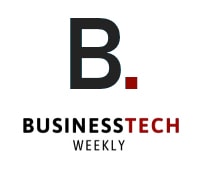How to Build a Secure ERP [10 Developer Tips]

Modern enterprises depend on Enterprise Resource Planning (ERP) systems as their digital fundamental structure. These platforms unite different business functions starting with procurement and manufacturing up to HR, finance and customer service into a unified system. The need to create an ERP system that performs well and protects data has grown stronger because organizations depend on these systems for their daily operations.
A 2024 study conducted by IDC reveals that digital transformation efforts of enterprises now focus on ERP modernization as their leading priority. The process of modernization makes systems more vulnerable to cyber threats. ERP systems contain important organizational data which includes intellectual property and financial records and employee information while providing access to vital operational procedures. Security stands as an essential requirement for every system.
The process of ERP development whether for small or large-scale custom ERP software solutions requires immediate consideration of security features to protect against data breaches and costly security incidents. The following guide demonstrates methods to construct ERP systems which defend against present-day cybersecurity threats while maintaining flexibility and power.
1. Design a Scalable, Secure Architecture from Day One
The foundation of security requires architectural considerations. The development of secure ERPs needs to be built into the system during its initial design phase because later modifications will not be feasible.
Start with a modular or microservices-based approach. The implementation of this design pattern results in both faster development and simpler updates while decreasing the potential attack points. Monolithic ERP systems experience poor component isolation because a single compromised element makes the entire system vulnerable.
A layered system architecture should have four distinct sections which include presentation, application, business logic and data layers. Your system needs separate firewalls and access controls for each layer. ERP vendors SAP and Microsoft Dynamics along with smaller developers should implement this standard security practice.
When designing cloud-based ERP infrastructure you should implement the ”zero trust” model which denies access to all devices and users by default regardless of their network position.
2. Apply Role-Based Access Control (RBAC) and Fine-Grained Permissions
A custom ERP software system requires proper definition of user access rights during its development stage.
Role-Based Access Control (RBAC) protects users from accessing data beyond their assigned work responsibilities. Many security breaches stem from employees who maintain too much access to crucial system modules which include payroll and vendor payment approval functions.
The permission model of Salesforce allows administrators to establish access rules at both the object and field levels. The detailed permission structure enables organizations to control data exposure while minimizing insider attacks.
Implement the principle of least privilege (PoLP) as part of your security measures. The system should limit all users and applications to only have access to the bare minimum required. Check permissions on a regular basis especially when there are employee role changes.
3. Secure All Data – In Transit and At Rest
Data protection stands as the fundamental basis for creating any secure Enterprise Resource Planning (ERP) system. The extensive data processing operations of ERP systems include handling orders and invoices along with customer information and additional business data. The exposure of this data leads to major destructive outcomes.
Always use encryption. Data transmission security should use TLS 1.3 with perfect forward secrecy encryption protocols. The storage of data requires encryption protection through AES-256. File-level encryption and database column-level encryption should be implemented as additional measures to protect data.
A secure key management system requires proper management of encryption keys. The Key Management System (KMS) enables scheduled key rotation for encryption keys which is a standard procedure in Oracle Cloud ERP and other enterprise systems.
Backups should be encrypted before storage in either isolated cloud environments or off-site facilities.
4. Enforce Multi-Factor Authentication (MFA)
An ERP system with robust security features remains vulnerable to attacks through stolen user credentials. The combination of MFA with two authentication factors provides dual protection through user verification using possession-based tokens and biometric identity checks.
The Verizon Data Breach Investigations Report of 2024 shows that credentials hacking breaches cause 80 percent of all attacks. MFA technology stands as the solution to stop the majority of such incidents from occurring.
MFA requirements should be mandatory for all users with administrators needing to enable the system. Users should have the option to select between mobile apps and biometric verification as authentication methods and physical security keys like YubiKeys.
Your cloud-based ERP system should integrate with identity providers (such as Okta, Azure AD) that provide SSO and MFA functionality.
5. Develop and Maintain Secure APIs
APIs function as the foundation which unites various ERP platforms in modern technology. The ERP system allows third-party applications (including CRMs and analytics tools and logistics solutions) to connect to its platform. The system contains security risks because of insufficient protection measures when APIs are not properly secured.
Your ERP system security requires the implementation of the following measures:
- Use OAuth 2.0 for authorization
- Always validate and sanitize input data
- Implement rate limiting and IP whitelisting
- Error messages should be brief since detailed messages can expose internal system operations
SAP’s Business Technology Platform serves as an API-first ERP platform which demonstrates secure practices in its design. Small ERP systems should duplicate this approach through complete documentation creation alongside sandbox testing environments and authentication system implementation.
6. Monitor Everything — Logs, Access, and Anomalies
Your ERP system should be under constant observation. The combination of operational visibility allows real-time detection of security breaches.
A centralized log management system must collect data from your application servers as well as databases and user interfaces and cloud platforms. Organizations should implement ELK (Elasticsearch, Logstash, Kibana) or Splunk or AWS CloudWatch as their integrated security tools.
Look for red flags such as:
- Unusual login patterns
- Repeated failed login attempts
- Access to restricted data outside business hours
You should establish alert systems to detect suspicious activities and implement SIEM (Security Information and Event Management) systems for advanced detection and reporting capabilities.
7. Patch Regularly and Eliminate Vulnerable Dependencies
Outdated software is one of the easiest paths for attackers. Your ERP systems will automatically acquire the security status that comes from all libraries and frameworks and modules you utilize during development.
The OWASP Dependency-Check and GitHub’s Dependabot provide dependency scanning functionality. The JavaScript framework analysis tools Snyk and others help detect insecure packages before they reach production.
The system requires regular updates for both third-party code and these components:
- Web servers (e.g., Apache, Nginx)
- Database engines (e.g., MySQL, PostgreSQL)
- Operating systems and firmware
Organizations like Equifax learned this the hard way. The 2017 Equifax breach of 147 million records occurred because they failed to update Apache Struts which had an existing security issue.
8. Schedule Security Audits and Pen Tests
Security audits verify that your codebase and infrastructure along with your policies follow industry-established standards. The security process is vital for sectors which must adhere to strict compliance regulations including healthcare, finance and government.
Third-party audits should occur at least once per year and penetration tests must be performed when major system updates or migrations occur.
Run both static (SAST) and dynamic (DAST) testing within your CI/CD pipeline. The combination of SonarQube, Veracode and Burp Suite tools allows you to identify security flaws before releasing hardened code to production.
9. Enforce Data Segmentation and Isolation
ERP systems control data from different organizational departments which include finance, HR, inventory and sales functions. A breach of one data segment should not result in a complete system compromise.
The implementation of separate databases or schemas works for different data domains. Strict network segmentation and firewall rules should be implemented. In cloud environments, use different VPCs or subnets for various services.
Workday separates financial and human resources information through both network-based and application-based isolation to protect sensitive data from exposure.
10. Build a Security-First Culture Across the Organization
Even the best-designed system can fall victim to human error. The IBM Cyber Resilient Organization Study of 2023 discovered that human mistakes during operations led to 95% of all security breaches.
The organization should provide developer training about secure coding standards. The organization must teach employees how to detect phishing scams and create robust passwords and identify security issues they should report.
Your organization should implement internal wikis as well as mandatory security modules alongside simulated phishing campaigns. Security needs to function as an essential performance indicator rather than being limited to basic regulatory requirements.
Final Thoughts
The final message states that security stands as an essential core component rather than an optional feature.
Today’s ERP software developers should remember security exists beyond one-time implementation. It’s a continuous effort. Your platform security needs regular development to match platform expansion and changing threats and business growth requirements.
The implementation of these best practices by independent consultants or members of large ERP development teams results in trustworthy compliant and resilient ERP systems.
ERP security demands extraordinary attention from smaller vendors and custom development teams because they cannot match the investment levels of SAP Oracle and Microsoft. A single security breach poses equal dangers to every organization because it leads to revenue losses and reputation harm and regulatory penalties.
Security remains the essential factor which keeps your system operational even after usability attracts users to your ERP system.

